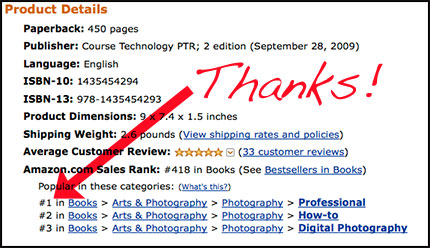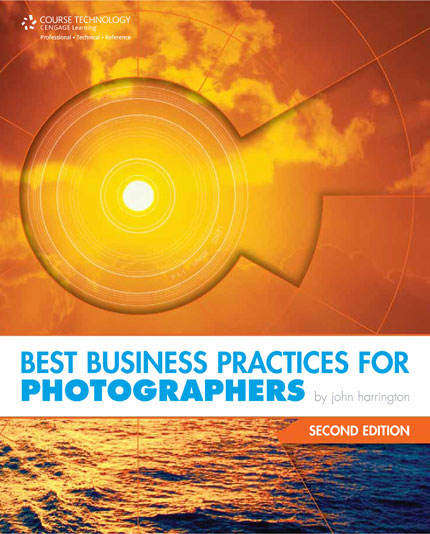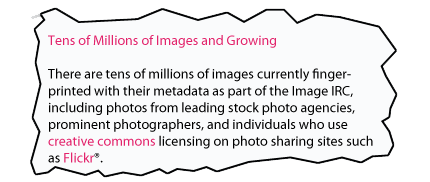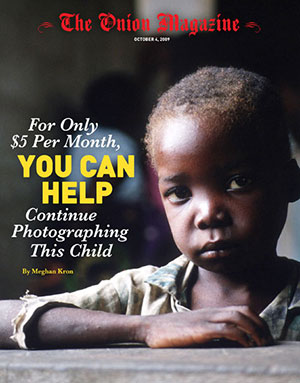| Business Update Jonathan Klein Co-founder and Chief Executive Officer Hello from New York! I have just returned from a busy week in Seattle with the Senior Leadership Team. We met to share ideas, plan for 2010, get complete clarity about the strategy and vision and, finally, to spend time together as we had not met since April of last year. The feedback we have received from the attendees was absolutely clear – it was a great week and one of the best SLT meetings in the history of the company. It is important that I share with the whole company some of the key issues that were covered.During the meetings, we spoke candidly about where we are today. But more importantly, we focused on the opportunities ahead in 2010, and the significant investment we will be making in our future. 2010: Investing in our Future Growth Simply put, 2009 has brought unprecedented changes to Getty Images, and the world. To name just a few: we have experienced a meltdown in the economy, a collapse in financial markets, acceleration in the decline of print advertising, and that is just for starters. We have taken our company private, obtained new owners, added a number of great SVPs (all of whom were internal promotions), reduced headcount, had a major clampdown on spending, acquired our second largest competitor, accelerated the integration of that business, brought in management consultants, paid no bonuses, decided not to give pay raises, froze pension matches in the US and launched many new initiatives, including with Flickr, with our partners from Time and now Daylife. If that was not enough, we worried about revenues since the beginning of the year and completely realigned our budget to respond to the environment. Just reading this far-from-comprehensive list is quite exhausting. Yet, I could not be prouder of our team – employees at all levels of our company – in both HOW we have managed these and other events, as well as WHAT we have done. The way we behave matters and the Leadership Principles have always been, and will continue to be, the filter through which we have made tough decisions. The choices we’ve made have been the right ones. I am absolutely confident that we have done almost everything right in this recession to be positioned well when it ends. 2010: Investing in our Future Growth Businesses are using imagery more than ever. This is great news for us, but it also means that we must shift our business model and change the way we operate to more directly align with how our customers use imagery, and where our business is going. The major trends we are seeing in our business today are: · Traditional creative stills (RM and RF) is becoming a smaller part of our business. Our customers use more imagery online, which means more volume, but at a lower price. Big-spend print campaigns are not dead, but there are certainly fewer. · iStockphoto is the fastest growing part of our business. It is expected to hit $200 million in revenue this year – that is growth of more than 35 percent. · Editorial imagery (news, sport, entertainment and archive) is also growing. We are taking market share and will grow significantly when market conditions improve and also when there are more major sports events next year. We were once thought of as outsiders in this area, and we are now regarded as stewards and leaders. There are many countries in which we can achieve major growth in this area. · Newer and higher-growth businesses are key to our success. Yes, Life.com and our partnership with Daylife are highly strategic. But this is not just about the “sexy new stuff.” It is about the businesses that have enormous growth opportunities, like footage, music, news, sport, entertainment, image.net and Media Manager. We also see growth potential in the Media and Corporate segments, as well as in certain countries and regions. These trends, among others, have led us to our Key Initiatives and Overriding Objective for 2010. Overriding Objective: Achieve company-wide revenue growth Getty Images did not grow overall revenues in 2009. We must be a growing business, and we must increase our revenue in 2010. Through continued focus on the Leadership Principles, our five Key Initiatives for 2010 will be: 1. Implement Project Perspective About four months ago, we brought in a leading global management-consulting firm, Bain & Company , to help us look hard at areas where we can and should improve. Bain gave us a fresh, outside perspective on how our business is run. They focused mainly on the areas of sales, finance, and editorial and creative operations. I think it’s important to note that, unlike many businesses that Bain are brought in to review, they quickly realized that our business was tightly run and managed, and there were far fewer savings to be had than they had originally anticipated. That said, the plan is now complete, and now we begin doing what we do very well – execution and implementation. The main outcome of Project Perspective is the crucial need to drive our customers to increase the amount of unassisted sales so that we can remove the administrative burdens that currently fall on our sales and finance organizations. In order to do this properly and responsibly, our infrastructure must be improved. This means we will be increasing our normal technology investment by approximately $6 million, or 25 percent, to complete infrastructure and technology projects. Many of these projects have been waiting for years to be completed, and we will now finish this work, enabling us to be a more efficient business. Project Perspective takes us from being the best in our industry, to becoming the best in any industry, from both a back end and customer facing perspective. It is a continuation of the work we have done to make it easier for customers to purchase from us, as well as to convert prospective buyers into Getty Images customers. The timing is right. As a private company, we can now focus on our long-term strategy and invest in our business for growth. It’s important to mention that implementing Project Perspective will take time; there will be much more information coming to you soon as the plans are put into place, so stay tuned.
2. Build the market-leading subscription business Subscription is a fast growing part of the market, and an area where we have had a long-standing gap in our product portfolio. Jupiterimages Unlimited brings a very good base from which to start, but we will create an entirely new subscription business that builds upon it. This new subscription product will be a major initiative, with significant marketing support. It also represents a major collaboration between Getty Images and iStockphoto. We may not be number one in subscription – YET – but we know how to get there and will get there. 3. Sell all products in all markets As I noted earlier, traditional creative stills continues to decline, and even if we see a bump in revenue here after the recession, we must expect that the trends will continue for it to be a smaller part of our overall business. Yet we know customers are using more imagery than ever, and want our services across the board. This means we must sell more products to drive growth. We have seen some great success with some of the new pricing models for creative imagery, with cross-selling footage, music and our other products in 2009 – and we must accelerate that in 2010. Offering ALL our customers ALL our products and services in ALL segments and in ALL countries remains critical.
4. Enhance and build on iStockphoto's leading position in microstock and as the digital content destination for designers iStockphoto is the fastest growing part of our business, and it is the market-leader in microstock. But we cannot be complacent. We must embrace microstock, and we must evolve it. There are many synergies with the rest of the company that we will capitalize upon, especially in marketing, product development and technology. Additionally, designers are a growing segment for us, and iStockphoto has great brand and market position to allow us to broaden our product offering with this customer base.
5. Improve website conversion rates In recent months, we have seen significant success in growing traffic to our sites. However, we are facing challenges converting these visitors into buyers. This is not just a website issue – it’s also about product, pricing and licensing models. This Key Initiative dovetails directly with implementing Project Perspective – converting visitors into purchasers on our website means more unassisted sales. This is key to our long-term business, growing revenue and growing our business. You may see an overall theme emerging from our 2010 Key Objectives and Initiatives – in fact, it was also the overall theme of our recent SLT meetings – Investing in Growth. After one year of being a private company, and after navigating the rough road of 2009, we can and must think strategically, long-term, big picture. In the last few months, the bad news has come in droves. But optimism has played a key role in getting us through these tough times, and I am proud of the way we have handled it. It is up to all of us to continue to step up and inspire excellence. As we head into 2010, I look to each of you to collectively embrace optimism and to increase our standards of performance. We must also continue to maintain our strong focus on the Leadership Principles. They have been a key part of our company for eight years now, and have been essential to navigating the tricky times of the past 18 months. I am very proud of this, and am more certain than ever that we must continue to adhere to them as we turn our focus to growing the business. Finally, on a personal note, thanks so much for being on my team during this period. I know you are all working harder than ever, you have sacrificed personal time and put more of yourself into our company than ever before – this has not gone unnoticed. We will emerge from this year and this recession a much stronger company. Getty Images will be 15 years old next year and this is the best team we have ever had at the helm. 2010 will be a big year for us, and I look forward to the important work we will do together. Thank you, Jonathan Klein Co-founder and CEO
| 










